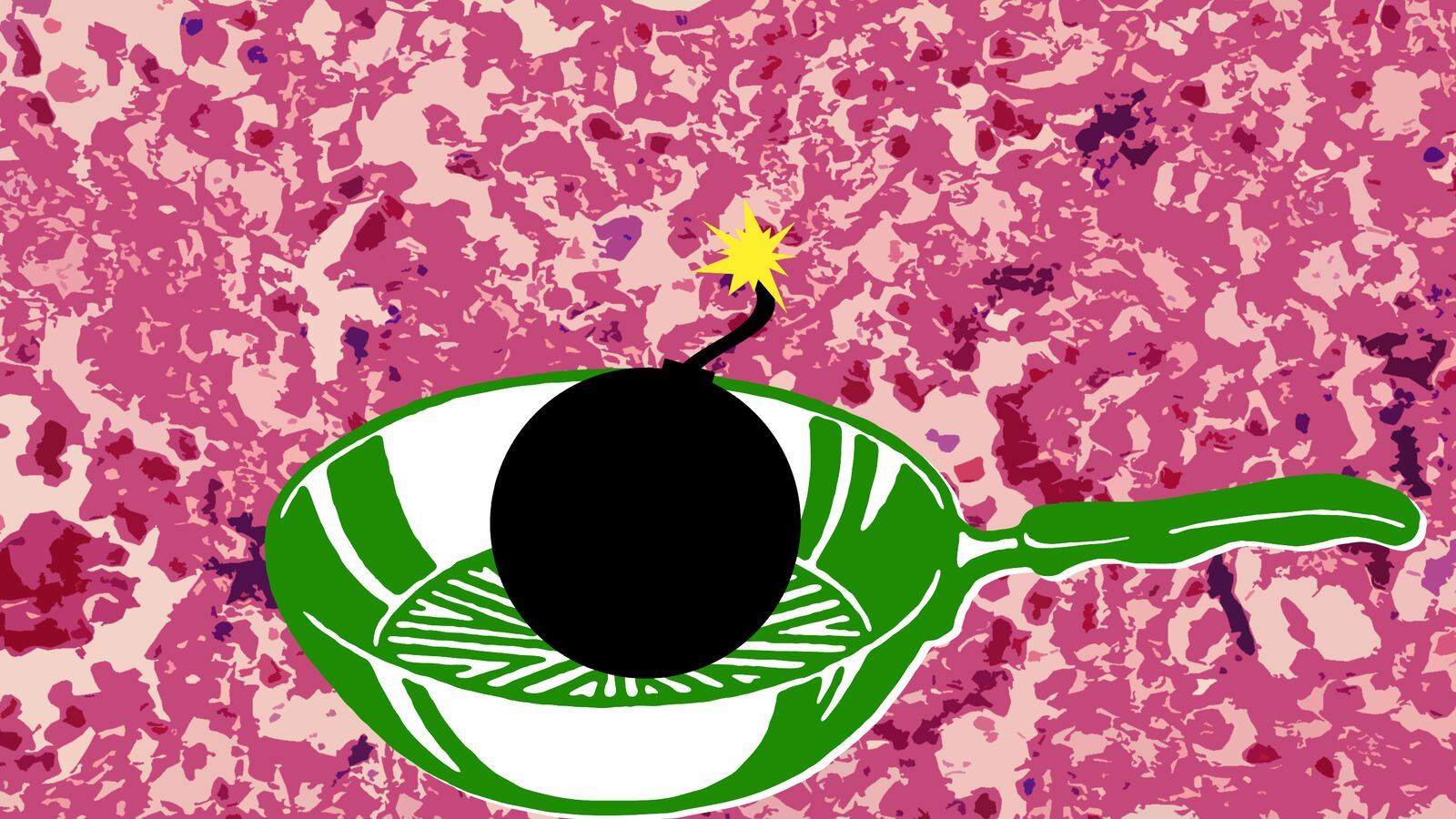It came as a shock when the U.S. military came clean about one of the worst biodefense screw-ups on American soil in decades—the release of live, lethal anthrax to more than 85 unsuspecting labs. Perhaps it shouldn’t have been a complete surprise, given the anthrax’s source.
Dugway Proving Grounds—a massive, 1,300-square-mile Army research and testing facility in remote, northwestern Utah—has had throughout its history a number of alarming safety lapses involving deadly chemicals, biological agents, and high explosives.
It’s not just that Dugway failed for more than a decade to follow standard procedures for killing the lethal anthrax bacteria—a long-running blunder that led to the lab shipping around the globe live anthrax samples that were supposed to be dead. (A Pentagon review of that biosafety breach is due this week.)
Internal Army documents obtained by The Daily Beast show that Dugway’s handling of dangerous explosives was so slipshod that Defense Department inspectors in 2014 recommended that a bomb-handling course be “suspended.” Those inspectors discovered that staffers at Dugway were mixing together potentially lethal “primary” explosives in everyday pots and pans—the kind of gear you’d find in your kitchen, not in a cutting-edge military research facility. And these staffers had no coherent rationale for why they were so casually handling explosives that made nitroglycerin look like Play-Doh.
“People were shocked… It was like: What are you guys doing out here?” a source familiar with the investigation said. “No one could adequately explain why they needed to be f-ing around, making these exotic explosives.”
Colonel Ronald Fizer, Dugway’s commanding officer, defended his troops’ methods. “They are unorthodox but have been vetted by experienced synthetic chemists, EOD [explosive ordnance disposal] operators and have been used for eight years in the training of over a thousand EOD personnel, safely and with no mishaps,” he wrote in a November 2, 2014, memorandum.
“The incident was fully investigated and all corrective actions implemented,” added Pentagon spokesperson Major Eric Badger in an email to The Daily Beast.
The year before, however, a Dugway contract chemist blew off part of his right hand and damaged his eyesight when he inexplicably decided to synthesize a dangerous explosive compound with a simple “mortar and pestle,” according to another internal Army document obtained by The Daily Beast. That compound, erythritol tetranitrate, is a close cousin to an explosive commonly used by terrorists in their bomb plots. But the compound used by al Qaeda and other terror groups is less susceptible to friction and impact—and is therefore safer to use than the stuff being toyed with at Dugway.
The Pentagon did, however, provide evidence indicating that Dugway has a near-flawless safety record. The Department of Defense gave The Daily Beast logs from the Occupational Safety and Health Administration showing only a single work-related injury over the past three full years. (The OSHA logs only account for government employees’ wounds; injured contractors—like the chemist with the mangled hand—aren’t included in such statistics.)
And of course, the live anthrax release tells a different story. In May, a Maryland biotech firm disclosed that it had discovered an anthrax sample that it believed to be dead was, in fact, alive. And that was a matter of some concern, because anthrax can be fatal. Its spores can make their way into the human bloodstream, unleashing a pair of toxins. One triggers a fluid buildup in the central chest cavity, squeezing the heart and lungs. The other assaults white blood cells that serve as the body’s natural defenses. That’s how five people were killed during the anthrax attacks of 2001.
Thankfully, no one was killed—or even injured—in that still-undisclosed Maryland lab. (Many biodefense experts believe the risk to public health was minimal, in fact.) But when investigators began examining the source of the live samples, they found that they came from Dugway, and that Dugway had been shipping other live samples around the world for a decade.
In early June, the Pentagon promised a top-to-bottom review of how that happened. The review is now complete and is circulating among the Defense Department’s top ranks. It is expected to be released to the public this week.
“The Department takes this matter very seriously and is acting with urgency to address it,” Badger told The Daily Beast in an email. “The Department is also investigating any apparent lapses in performance in order to ensure the appropriate accountability.”
According to one document obtained by The Daily Beast, Dugway filed 20 “Biological Mishap and Incident Reports” over a five-and-a-half-year period, from early 2009 to late 2014. Seventeen of those incidents were simply accounts of biosafety drills, according to the Pentagon. One involved a relatively harmless leak in a biosafety lab centrifuge. Another concerned a suspicious envelope that “was tested and found to contain no biological organisms,” according to Badger. Dugway officials can’t seem to find the record of the final one.
All in all, a relatively clean bill of health. And yet for years, there have been signs that something was amiss at Dugway—particularly in the way the lab handled its biological warfare agents. USA Today reported that in 2007 the Centers for Disease Control ripped Dugway for its ineffective chemical method of killing its anthrax bacteria before shipment.
The Utah facility instead turned to gamma radiation to render the specimens harmless. Dugway technicians were so sure their anthrax was dead, they issued each sample a “death certificate.” They were wrong.
The death-by-gamma-ray process was never standardized or validated, and didn’t work. The Dugway procedure “did not account for the variable amounts of spores treated in the gamma cell irradiator,” noted a June 5 Centers for Disease Control report, obtained by USA Today.
Dugway’s ongoing struggles to render the anthrax safe recall an earlier, even darker era in the facility’s history. At the height of the Cold War, the U.S. military treated its own troops like guinea pigs, exposing them to weaponized pathogens, as well as nerve gas, blister agents, and hallucinogens. Dugway was one of the primary testing grounds, conducting 50 tests on more than 5,800 service members. Many veterans have spent a lifetime trying to recover from what they experienced there.
In 1968, things took an even stranger turn, as the website io9 recounts. An aircraft sprayed droplets of VX nerve agent over one of Dugway’s test sites. A strong gust carried the droplets over neighboring farms. Nearly 4,000 sheep died as a result. It took the Army decades to admit what happened.
The next year, according to a history website run by the Utah state government, “rare antibodies of a disease called Venezuelan Encephalitis were found in birds, cattle, sheep, and rodents around the base. During the same year Air Force pilots flying over Dugway identified an entire region as highly contaminated.”






